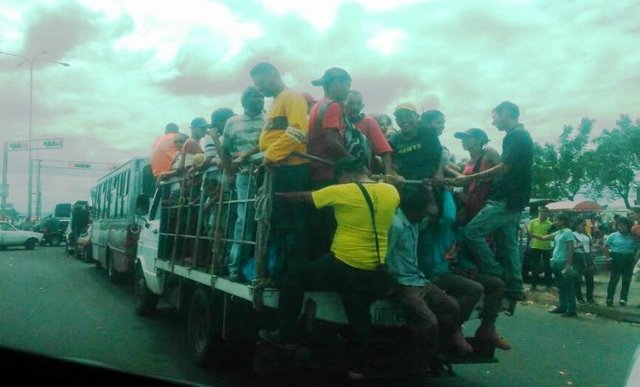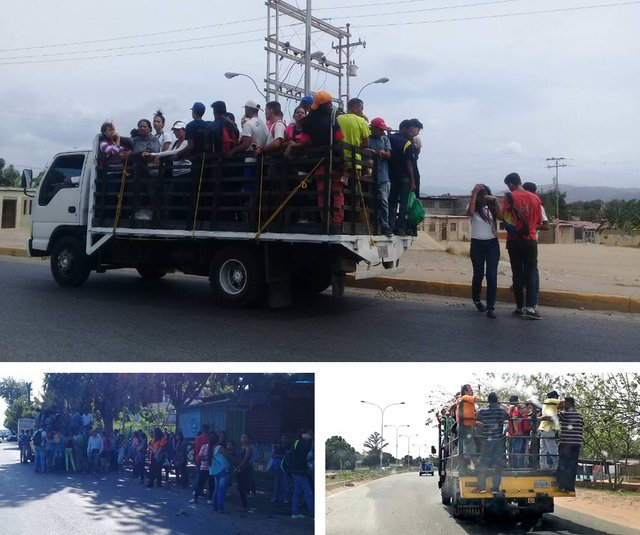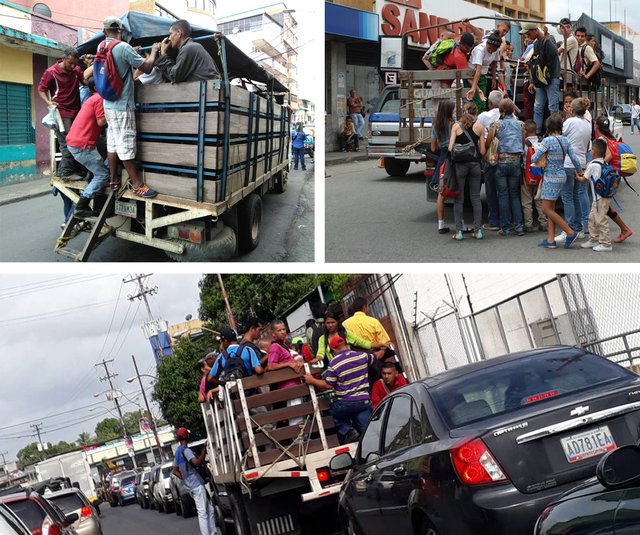Crisis of public transport in Venezuela.
Hello Steemers, this time I come to inform you with studies, photos, videos and stories, how is public transport in the country with the largest oil reserves in the world. I will cover the most important cities of the country that are going through great gloom in order to move to their jobs or study houses.
Anzoátegui State.
It is the State where I live, the State where we have one of the largest hydrocarbon refineries in the world.
Since the end of April 2018 there has been a desertion of public transport units, this due to the lack of spare parts and rubbers because they have too high costs and can not buy them. Currently 100% of the bus fleet is only working 10%.
Due to the lack of buses appear popularly known as "pirates", these "pirates" charge the price of the ticket as they see fit, According to the Official Gazette the ticket is Bs. 3,000 for Microbuses 22 or more seats.
The "pirates" charge from Bs. 5,000 to Bs. 8,000.
The public transport cars of 22 seats or less must charge according to the law: Bs. 3,500 in this range are the buses 22 seats, the carts per seat 5 seats.
The "pirates" charge from Bs. 10,000 to Bs. 20,000.
Due to this negligence, the circulation of "kennels" has increased in the northern part of the State (Barcelona, Puerto La Cruz, Lechería, Guanta) before the paralysis of public transport.

Maracaibo state Zulia.
With the crisis of transport in the country, the ingenuity of Venezuelans to optimize the deteriorated infrastructure reaches unusual levels. The case in Maracaibo this image went viral on the Instagram social network this vehicle with passengers on the roof.
The owner of this deteriorated vehicle took advantage of the roof grilles, to add passengers who have this option at the end of the afternoon to get home. Because it is very certain that at noon it will be impossible for them to climb those grilles because of the scorching heat of Maracaibo.

San Cristobal, state Tachira.
The peak hours are at 7:00 in the morning and at 3:00 in the afternoon, when there are many people walking along the viaducts, the crowded stops of passengers and only two or three buses running. Meanwhile, the "kennels" are picking up from the center of the city those who go to nearby towns.
«Every day I have to risk my life when I leave home, I have to walk to the Elevated Bridge, from there I grab a line to El Mirador and from there another line to my house or walk. I walk between two and three hours a day. Normally there are never any buses. The risk is that you are robbed or killed when you leave at 4:00 in the morning, "said Naimar Galvis, a nurse by profession.

Video of the use of the new public transport in Venezuela.
The "kennels" represent a setback of approximately 60 years, when in the cities there were few units to mobilize the Venezuelan standing. To go to school, to go to work.


You could already see how are the conditions of public transport in Venezuela, I will continue to inform you about what life is like in Venezuela.
Your entry has been upvoted by the @Faircrew trail. For more information, I invite you to be part of our Discord server .